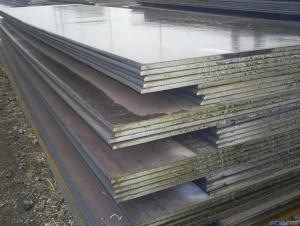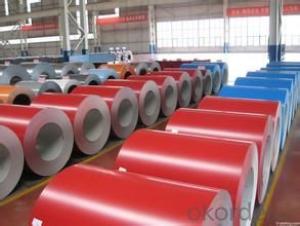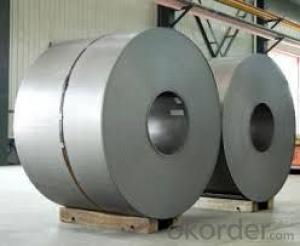The production of hydrogen 15CrMo steel in Wuyang steel works
- Loading Port:
- China Main Port
- Payment Terms:
- TT OR LC
- Min Order Qty:
- -
- Supply Capability:
- -
OKorder Service Pledge
OKorder Financial Service
You Might Also Like
Hydrogen 15CrMo (H) containing WYJ testing, heat treatment, is more than or equal to -10 DEG C im
Hydrogen 15CrMoR, 15CrMoR (H) technical conditions of steel plate production
1 the use of range from Wuyang steel quality management department
The technical conditions applicable to the medium temperature pressure vesselpressure components with less than 150mm thickness of the steel plate.
2 normative references GB713-2008
In 3 dimensions, shape, weight and permissible deviations
3.1 steel plate size, shape and tolerances shall comply with the provisions of GB/T709. 3.2 thickness deviation according to B class or the C GB/T709 class in the contract execution, Naka A.
3.3 plate theoretical weight delivery, theoretical weight the maximum thickness ofsteel plate thickness is permitted and the minimum thickness of the arithmetic mean value. The density of steel 7.85g/ cm 3
The chemical composition of steel requirements, shall be in accordance with the provisions of table 1. Table 1 chemical composition of Wt% components
C Si Mn P Analysis of the S Max Cr Mo melting
0.12~ ~ ~ ~ ~ ~ 0.18 0.15 0.40 0.40 0.70 0.010 0.010
Analysis of 0.8 ~ 1.2 0.45 ~ 0.60 of the finished product
0.10~ ~ 0.20 0.13 ~ ~ 0.43 0.37 ~ ~ 0.73 0.012 0.010 0.75 ~ ~ 1.25 0.43 ~ ~ 0.62
Analysis of Ni Cu Sb* Sn* component of As* Max [H]* melting
Analysis of 0.20 and 0.20 is less than or equal to 0.003 is less than or equal to 0.015 and 0.016 2ppm products
0.20 0.20 0.003 0.015 0.016
Less than or equal to 2ppm
Note: (1) melting analysis should be per furnace (tank), sampling, analysis of products (including the X coefficient) according to Zhang sample delivery. (2) with "*" the element record analysis results. [H] under the premise of ensuring meltinganalysis, but not for the product analysis. Methods: 4.2 smelting by electric furnace+ refining outside the furnace, and through smelting process vacuum degassing.The plates shall be fine grain steel. 4.3 delivery state: steel plate to normalizing + tempering (allows accelerated cooling) delivery. 4.4 mechanical properties, shallcomply with the provisions of table 2. Table 2 project numerical unit room temperature tensile Rm
Thickness is less than or equal to 100mm 450~~590 MPa
>100~150mm 440~~580 room temperature tensile Rp0.2 less than 100mm thickness greater than 295 MPa
>100~150mm
255
Methods: using electric furnace smelting furnace refining, and through + vacuum degassing of the smelting process. The plates shall be fine grain steel. 4.3 delivery state: steel plate to normalizing + tempering (allows accelerated cooling) delivery.
- Q:Excuse me, what's the difference between cold rolled steel plate and hot plate in steel plate?
- In general, cold rolled steel has better strength, hot rolled steel plate has better ductility. The general thickness of cold rolled is relatively small, can have a larger thickness. Cold rolled steel plate surface quality, appearance and dimensional accuracy than the hot plate, and the thickness of the product right rolling thin to about 0.18mm, so it is popular for. The acceptance of the products, can ask professional personage.
- Q:Can steel sheets be used for electrical grounding?
- No, steel sheets cannot be used for electrical grounding.
- Q:Can steel sheets be used in food processing or pharmaceutical industries?
- Steel sheets are indeed applicable for use in the food processing and pharmaceutical industries. These industries often utilize stainless steel sheets because of their remarkable resistance to corrosion, their durability, and their hygienic properties. Stainless steel, known for being non-reactive and not releasing any harmful substances into food or pharmaceutical products, is frequently employed. Furthermore, its ease of cleaning and maintenance makes it a suitable option for applications that necessitate high levels of cleanliness and hygiene. Moreover, stainless steel sheets are capable of withstanding extreme temperatures and are resistant to impact and abrasion, making them an ideal choice for the food processing and pharmaceutical industries, where stringent quality and safety standards are crucial.
- Q:Can the steel sheets be used for skylights or roof windows?
- Yes, steel sheets can be used for skylights or roof windows. Steel is a strong and durable material that can withstand various weather conditions, making it suitable for these applications. Additionally, steel sheets can be fabricated and designed to meet the specific requirements of skylights or roof windows. They can be installed to provide natural light and ventilation while maintaining the structural integrity of the building. However, it is important to ensure proper insulation and glazing to prevent heat loss or gain and to optimize energy efficiency.
- Q:How do steel sheets compare to other materials like aluminum or plastic?
- Steel sheets are generally stronger and more durable compared to aluminum or plastic sheets. They have a higher tensile strength and can withstand heavier loads. However, steel sheets are heavier and may require additional support structures. Aluminum sheets are lightweight and have good corrosion resistance but are not as strong as steel. Plastic sheets are lightweight and inexpensive, but they lack the strength and durability of steel or aluminum. Ultimately, the choice between steel, aluminum, or plastic sheets depends on the specific application and requirements.
- Q:Are the steel sheets suitable for high-temperature applications?
- Yes, steel sheets are generally suitable for high-temperature applications. Steel is known for its excellent strength and durability, making it a popular choice for various industries requiring materials that can withstand high temperatures. Steel sheets can be manufactured to have high melting points and can retain their structural integrity even under extreme heat. Additionally, steel has good thermal conductivity, allowing it to efficiently transfer heat away from the surface. However, it is important to consider the specific grade and composition of the steel sheets as some alloys are specifically designed for high-temperature applications. It is recommended to consult with a materials engineer or specialist to ensure that the steel sheets selected are suitable for the specific high-temperature environment.
- Q:What is the typical corrosion resistance of a steel sheet?
- The typical corrosion resistance of a steel sheet can vary depending on factors such as the specific type of steel, the presence of protective coatings, and the environment in which it is exposed. However, steel sheets are generally known for their moderate to high corrosion resistance due to the presence of alloying elements such as chromium and nickel.
- Q:What are the different shapes available for steel sheets?
- There are several different shapes available for steel sheets, depending on the specific requirements and applications. Some of the commonly used shapes include: 1. Flat sheets: These are the most basic and versatile shape of steel sheets. They have a flat surface and are available in various sizes and thicknesses. Flat sheets are commonly used in construction, automotive, and manufacturing industries. 2. Coils: Steel sheets can also be available in coils, which are continuous lengths of sheet metal wound into a roll. Coils are often used for large-scale production processes, such as in the manufacturing of appliances, automobiles, and HVAC systems. 3. Perforated sheets: These sheets have evenly spaced holes or perforations throughout their surface. Perforated sheets are used in applications where ventilation, filtration, or aesthetic appeal is required, such as in architectural designs, signage, and industrial machinery. 4. Corrugated sheets: These sheets have a series of parallel ridges and grooves, which provide strength and rigidity. Corrugated sheets are commonly used for roofing and siding applications, as they offer excellent durability and weather resistance. 5. Expanded metal sheets: These sheets are manufactured by cutting and stretching a flat sheet, creating a pattern of diamond-shaped openings. Expanded metal sheets are used in applications that require ventilation, security, or filtration, such as fences, walkways, and machine guards. 6. Diamond plate sheets: Also known as tread plate or checker plate, these sheets have a pattern of raised diamonds or lines on their surface. Diamond plate sheets are commonly used for flooring, stairs, ramps, and truck bed liners, as they provide traction and slip resistance. These are just a few examples of the different shapes available for steel sheets. The choice of shape depends on the specific requirements of the project, including strength, durability, aesthetics, and functionality.
- Q:How much is the rent for a day of Larson steel sheet pile
- As a kind of new building materials in the Larson steel sheet pile cofferdam, bridge construction, large pipeline, temporary ditch excavation for retaining, retaining water and sand retaining wall; in the wharf, unloading field wall, retaining wall, Levee Revetment, play an important role in engineering.
- Q:What is the average cost of steel sheets compared to fiberglass?
- The average cost of steel sheets can vary compared to fiberglass sheets depending on a variety of factors. In general, fiberglass sheets tend to be less expensive than steel sheets. This is primarily because the raw materials used in steel sheet production are more costly, and the manufacturing process is more complex. Furthermore, steel sheets are renowned for their durability and strength, making them a popular choice for applications that require resilience and resistance to harsh weather conditions or impact. Conversely, fiberglass sheets are typically cheaper due to the lower cost of raw materials and the simpler manufacturing process involved. They are commonly employed in applications where weight and corrosion resistance are crucial factors, such as the construction of boats or aircraft. Nevertheless, it is important to acknowledge that market fluctuations, availability, and specific project requirements can also influence the cost comparison between steel and fiberglass sheets. Hence, it is advisable to obtain quotes from suppliers and compare prices to accurately determine the average cost within a given context.
1. Manufacturer Overview |
|
|---|---|
| Location | |
| Year Established | |
| Annual Output Value | |
| Main Markets | |
| Company Certifications | |
2. Manufacturer Certificates |
|
|---|---|
| a) Certification Name | |
| Range | |
| Reference | |
| Validity Period | |
3. Manufacturer Capability |
|
|---|---|
| a)Trade Capacity | |
| Nearest Port | |
| Export Percentage | |
| No.of Employees in Trade Department | |
| Language Spoken: | |
| b)Factory Information | |
| Factory Size: | |
| No. of Production Lines | |
| Contract Manufacturing | |
| Product Price Range | |
Send your message to us
The production of hydrogen 15CrMo steel in Wuyang steel works
- Loading Port:
- China Main Port
- Payment Terms:
- TT OR LC
- Min Order Qty:
- -
- Supply Capability:
- -
OKorder Service Pledge
OKorder Financial Service
Similar products
New products
Hot products
Hot Searches
Related keywords



























